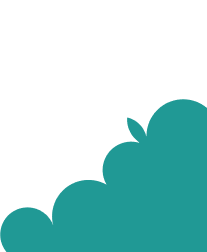
Unit 9 shows how digital technology can strengthen sustainability in micro-enterprises: cutting waste, saving energy, improving data, and supporting better decisions. It explains key concepts, introduces practical tools, and guides you in building a digital sustainability plan you can actually use.
What this unit covers
- Digital innovation & sustainability: how technology supports environmental, social, and economic goals (the triple bottom line).
- Toolbox: cloud computing, Internet of Things (IoT), and artificial intelligence (AI) — what they are and where they help.
- Low-cost/open-source options: SuiteCRM, Odoo, Trello, KNIME — quick wins for small teams.
- Planning: a simple template for a digital sustainability plan, with metrics and review steps.
- Case studies & assessment: short, real-world examples and a brief quiz.
Learning outcomes
By the end of Unit 9, learners will be able to:
- Describe how digital tools support sustainability in business.
- Choose appropriate tools for specific challenges (energy, waste, logistics, data).
- Implement simple digital solutions and track results with KPIs.
- Draft and refine a digital sustainability plan, using peer feedback.
Key ideas in plain terms
1) Why digital matters for sustainability
Digital tools streamline processes and reduce resource use. For example, shifting from local servers to cloud computing can cut energy demand by using efficient shared infrastructure. Training is needed, but the long-term savings are real.
2) The triple bottom line, enabled by tech
- Planet: track and cut energy, water, and waste.
- People: safer workplaces, better access to information, and inclusive services.
- Profit: fewer errors, faster decisions, and leaner operations.
3) Policy context (at a glance)
European initiatives encourage transparency and greener operations. Clear data helps with funding, tenders, and customer trust.
The toolbox (where each tool helps most)
Cloud computing
- What: run software and store data online instead of on local machines.
- Why: lower IT footprint, scalable costs, easier collaboration.
- Use cases: virtual office, data storage, analytics.
Internet of Things (IoT)
- What: sensors and devices that collect data in real time.
- Why: monitor energy/water, automate controls, predict maintenance to extend asset life.
- Use cases: smart meters, cold-chain monitoring, building management.
Artificial intelligence (AI)
- What: algorithms that spot patterns and optimise decisions.
- Why: route optimisation, demand forecasting, smart energy scheduling.
- Use cases: logistics planning, inventory, anomaly detection in utilities.
Low-cost and open-source options for SMEs
- SuiteCRM (CRM): manage customer data and campaigns; switch to paperless, segment for green offers.
- Odoo (ERP): plan purchasing, stock, and production; reduce over-ordering and waste.
- Trello (Projects): track sustainability tasks, owners, and deadlines in one place.
- KNIME (Analytics): pull data together and build simple dashboards for energy, waste, and CO₂e.
Tip: start with one tool that solves a real problem this month, then add more as value grows.
Build your Digital Sustainability Plan (step by step)
- Current state: where are the impacts and data gaps? (energy, waste, travel, packaging)
- Objectives: a few specific goals (e.g., “cut delivery fuel 20% in 12 months”).
- Strategy & actions: which tools, who owns them, and the timeline.
- Metrics: choose 3–5 KPIs and how you will measure them.
- Review: monthly checks; adjust actions based on the data.
Budget & scope: keep software spend lean; use trials and free tiers; plan for training time. Industry fit: pick tools that suit your sector and compliance needs.
Case studies (short and practical)
Austrian Brewery — Sustainability Balanced Scorecard (SBSC)
Integrated a digital SBSC to align targets (energy, waste, carbon) with operations. Real-time dashboards improved decisions; energy use and waste fell, and compliance improved.
WebWorks (Belfast) — Project management for green goals
Set Trello boards for “Energy Saving” and “Waste Reduction”, with clear owners and deadlines. Results: less paper, fewer devices left on, and better team coordination.
EcoFresh Organics (Copenhagen) — AI for routes and stock
Used AI to forecast demand and optimise delivery routes. Outcomes reported: 50% less food waste, 30% less fuel, faster deliveries, and a smaller carbon footprint.
Activities you can run tomorrow
- Tool stations (mini-lab): try a cloud setup, a basic IoT dashboard, and a simple AI forecast using sample data.
- Plan sprint (60–90 mins): draft your digital sustainability plan; swap for peer review; revise and finalise.
Measures that matter (keep it simple)
- Energy per unit (or per order) and % renewables.
- Waste diverted and inventory write-offs.
- Fuel per delivery or km per drop.
- Response time to buyer ESG data requests.
- Tool adoption: active users, tasks completed, dashboards updated.
Sample assessment questions
- What’s a primary benefit of digital tools for micro-enterprises? (Enhanced operational efficiency)
- What are the three pillars of the triple bottom line? (People, Planet, Profit)
- Which tool best reduces IT carbon footprint through shared infrastructure? (Cloud computing)
- Which open-source platform helps with data analytics? (KNIME)
- What’s the first step in a digital sustainability plan? (Assess current practices)
Key terms at a glance
Digital technology, digital innovation, sustainability, triple bottom line, circular economy, cloud computing, IoT, AI, CRM, ERP, SFDR, SBSC.
How to use Unit 9 in your business or classroom
- Kick-off workshop: agree one problem to solve with a digital tool this month.
- One-page plan: owner, timeline, KPI, and check-in rhythm.
- Monthly dashboard: track a short KPI set and decide the next improvement.



